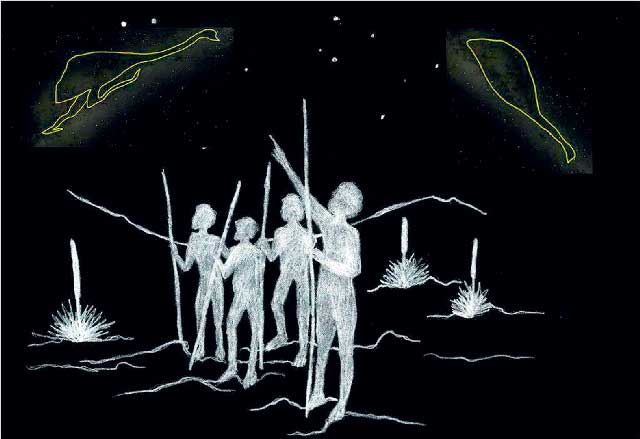David Reneke
Who were the first astronomers? What an interesting question. Astronomy is the oldest of man sciences but it’s also the newest. Everything we know about the night sky has been passed down through ancient history. As Australia has the oldest continuous culture on Earth, the first Australians were very likely to have also been the first astronomers. Quite an accolade!

Australian astronomers have been studying aboriginal culture and deciphering cave drawings to build a picture of the heavens as seen by these ancient cultures. Aboriginal Australians have been gazing at the night skies for thousands of years. It seems the Aborigines even pre-dated European stargazers, including Britain’s astronomy linked Stonehenge, estimated at 3,100 BC.
“Tribes used the sky for navigation, time keeping and to mark out the seasons,” said Dave Reneke from Australasian Science Magazine. “They ordered their lives by the stars. Most tribes have dreaming stories that explain tides, eclipses and the rising and setting times of the Sun and Moon.”
In one story, Walu the Sun is a woman who lights her fire every morning and scatters red ochre across the clouds, creating dawn. She then carries her torch across the sky, creating daylight. At the end of the day, she descends, puts out her fire, and travels underground through the night back to her morning camp.
“My favourite dreamtime story is about the Southern Cross,” Dave said. “One Northern Territory aboriginal tribe believed it was a giant Stingray and the two pointer stars to the cross are sharks ready to pounce. You can’t beat the Dreamtime stories for sheer drama and imagination.”
You can go out and find the Southern Cross tonight. It’s not too hard to locate, just look for the shape of a ‘kite’ high up in the early morning sky. The Southern Cross is the best known and most represented star group in the Southern Hemisphere.
“To many cultures around the world the cross has different meanings, Dave said. “The Maori know it as Te Punga, meaning the Anchor. To aborigines near the border of Victoria it represents the four unmarried daughters of a tribal elder named Mulululu.” Magic stuff huh?
Star patterns were important for Aboriginal people. For example, at different times of the year the Emu in the Sky is oriented so it appears to be either running or sitting down. Depending upon its position some aboriginal tribes knew it was time to hunt for emus or collect their eggs.
“Sadly much of the richness of the Aboriginal night sky has already disappeared,” Dave said. “But boy, what an amazing legacy it’s left behind!”
David Reneke
Source www.davidreneke.com




 USD
USD  AUD
AUD  CAD
CAD  NZD
NZD  EUR
EUR  CHF
CHF  GBP
GBP 





